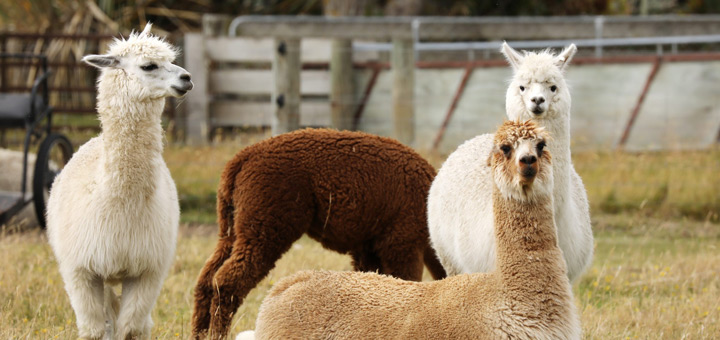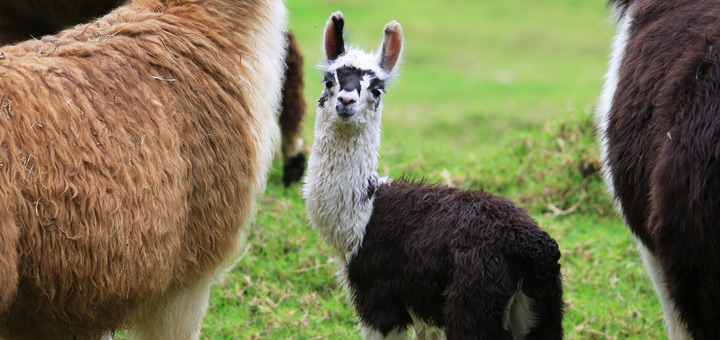Alpacas are animals that are widely regarded as the cutest from the Camelid family. Other animals that come from this family are the llamas, guanacos, vicunas, and camels. From a first look, you will instantly fall in love with these fluffy animals. Their floppy tufts and slender necks make them one of a kind.
Besides their unique look, the alpacas are the ones who produce the silkiest, most versatile fiber in nature. That is because they are shorn annually. Their fur is stronger than mohair, warmer than goose down, and more breathable than thermal knits. Therefore, there are many alpaca wool throws, scarfs, and blankets on the market. Here are 8 interesting alpaca characteristics:
Just like the llamas, alpacas are believed to have been domesticated more than 6000 years ago. Incas prized them for their prized fleece. Back at the time, the alpaca fiber was reserved exclusively for the elite and the noble ones.
This selection was made because of its high quality and versatility. They were farmed mostly in the Puna region in the Peruvian Andes. Today, there is still an abundance of them in the Andes.

Only half a century ago, the alpacas that existed in the U.S. could only be seen in zoos. In 1984, a small group of importers brought the first carefully selected alpaca herd to the United States and Canada. Since then, they have been present in more zoos and private farms.
Although dogs are commonly considered therapeutic animals, the alpacas are becoming increasingly common at hospitals, health care facilities, and retirement homes around the world. These animals make great hiking partners and bedside companions.

Baby alpacas are known as crías. The word “cría” translated from Spanish, means “baby” the newborn alpaca’s weight is between 10 and 17 pounds.
Another interesting thing that is quite unusual for the other animals is that the alpacas always poop in the same spot. They find only a few places in the pastures, in the wild, and they always go and do their work there. Because of this, some alpacas have successfully been house-trained. That is why many keep them as pets too.
Alpaca’s wool is similar to sheep’s wool, with the difference that makes it is much warmer and less itchy. These properties come from the fiber that lacks oil lanolin. This oil is hypoallergenic and does not require high temperatures and chemicals during the process of production.
That is why the alpaca wool is fine, silky, soft, and comes in lots of natural colors. The color palette varies from reddish-brown to rose-gray. Additionally, it is water-resistant and can mimic the appearance of cotton.
Due to these properties, the alpaca fiber is considered one of the most sustainable and ethical fibers. The alpacas are shorn annually. This process does not take more than 5 minutes.
You might also like: Differences between Alpaca Fibers and Other Natural Fibers
Alpacas come from two breeds: huacaya and suri. Huacaya characterizes by a dense, crimped coat. Suri is known for the longer and more prized wool. However, there is a third breed, called alpaca-llama hybrid. It is called alpaca in the US and huarizo in South America. This breed is a product of female alpaca and male Llama and is very popular because of its unique and long fleece.
For those of you who did not know, the alpacas do make sounds. Humming is the most common sound they make. They can hum softly, and that happens when they are curious, content, bored, worried, distressed, or just cautious.
When they are in danger or startled, they will announce a threat with a staccato alarm call and the rest will follow. When they breed, the male alpaca emits special vocalization known as “orgling”.
These are not the only interesting things that make the alpacas unique animals. Their unique personality and looks make them very demanded. That is why, for a long time, they have been very rare. Today, there are alpacas almost everywhere, especially because they can adapt their living in different conditions.
In Silkeborg Uldspinderi we are here to help you. You will have at your disposal many high-quality products. If you want to buy any alpaca scarves, shawls, cushions, or throws, please don’t hesitate to contact us through our contact page.
